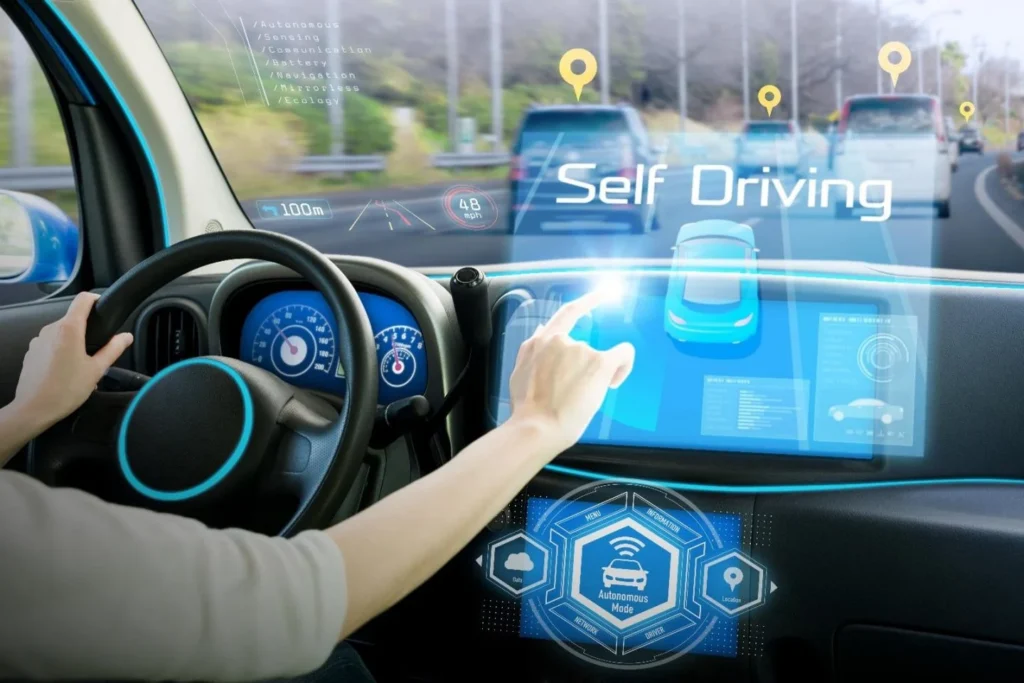The Rise Of Autonomous Vehicles: How Self-Driving Cars Will Change Urban Living is a topic that has been gaining increasing attention in recent years. As technology continues to advance, the development and deployment of self-driving cars are becoming a reality, sparking discussions about the potential impact on urban living. These vehicles have the potential to revolutionize transportation, reduce traffic congestion, and improve road safety. Additionally, they may also have far-reaching implications for urban infrastructure and city planning. As self-driving cars become more prevalent, it is important to consider how they will shape the future of urban living.
The emergence of autonomous vehicles has sparked curiosity about their impact on urban mobility. People are eager to understand how self-driving cars will affect public transportation, parking infrastructure, and city accessibility. Furthermore, the potential changes in commuting patterns, travel behavior, and the overall urban landscape have also piqued interest. As autonomous vehicles become more integrated into urban environments, it is essential to explore their potential effects on traffic flow, air quality, and the overall quality of urban life.
The Rise of Autonomous Vehicles
Autonomous vehicles, also known as self-driving cars, are a revolutionary technology that has the potential to completely transform the way we live and move within urban areas. These vehicles are equipped with advanced sensors, cameras, and artificial intelligence systems that allow them to navigate roads, interpret traffic signs, and react to their surroundings without human intervention. The rise of autonomous vehicles is expected to bring about significant changes in urban living, including improvements in road safety, reduced traffic congestion, and increased mobility for individuals who are unable to drive themselves.
Furthermore, the introduction of autonomous vehicles has the potential to disrupt traditional transportation systems, leading to shifts in car ownership models, the rise of ride-sharing services, and changes in urban planning and infrastructure. As self-driving cars become more prevalent, they have the potential to reshape the way cities are designed, with less emphasis on parking spaces and more focus on pedestrian-friendly environments and efficient transportation networks.
The Impact on Urban Living
The widespread adoption of autonomous vehicles is expected to have a profound impact on urban living. With the ability to communicate with each other and with infrastructure, self-driving cars can potentially reduce traffic congestion by optimizing traffic flow and minimizing the need for parking spaces. This, in turn, could lead to a reduction in air pollution and fuel consumption, creating a more sustainable urban environment.
Moreover, the rise of autonomous vehicles may also lead to changes in the way people view car ownership. Instead of owning a car that sits idle for the majority of the day, individuals may choose to rely on autonomous ride-sharing services or car-sharing programs, leading to a decrease in the overall number of vehicles on the road. This shift could free up valuable urban space that is currently dedicated to parking, allowing for the development of green spaces, bike lanes, and other amenities that contribute to a higher quality of urban living.
Challenges and Opportunities
While the potential benefits of autonomous vehicles are substantial, their widespread adoption also presents significant challenges. One of the main concerns is the potential impact on employment, particularly for individuals who make a living as professional drivers. Additionally, there are questions surrounding the legal and ethical implications of self-driving cars, including liability in the event of accidents and the decision-making processes of autonomous systems.
However, the rise of autonomous vehicles also presents opportunities for innovation and economic growth. The development of this technology has the potential to create new industries and job opportunities, particularly in the fields of engineering, software development, and urban planning. Furthermore, the increased efficiency of transportation enabled by autonomous vehicles could lead to cost savings for businesses and individuals, as well as improvements in overall productivity.
Safety and Regulation
One of the key considerations surrounding the rise of autonomous vehicles is the issue of safety. While proponents argue that self-driving cars have the potential to drastically reduce the number of traffic accidents caused by human error, there are still concerns about the reliability and security of autonomous systems. As a result, governments and regulatory bodies are faced with the challenge of developing and implementing robust safety standards and regulations to ensure the widespread adoption of autonomous vehicles does not compromise public safety.
Furthermore, the introduction of autonomous vehicles raises questions about data privacy and cybersecurity. Self-driving cars rely on a constant stream of data to navigate their surroundings, raising concerns about the potential for hacking and unauthorized access to sensitive information. Addressing these concerns will be crucial in building public trust and confidence in the safety and reliability of autonomous vehicles.
Infrastructure and Urban Planning
The widespread adoption of autonomous vehicles will necessitate significant changes to urban infrastructure and planning. Cities will need to invest in smart infrastructure, including advanced traffic management systems, dedicated lanes for autonomous vehicles, and vehicle-to-infrastructure communication technologies. Additionally, urban planners will need to rethink the design of streets and intersections to accommodate the unique needs of self-driving cars, cyclists, and pedestrians.
Furthermore, the rise of autonomous vehicles may lead to a decrease in the demand for traditional parking spaces, freeing up valuable urban real estate for alternative uses. This could pave the way for the development of green spaces, affordable housing, and commercial areas, ultimately contributing to a more sustainable and livable urban environment.
Accessibility and Mobility
Autonomous vehicles have the potential to significantly improve mobility and accessibility, particularly for individuals with disabilities or limited access to transportation. Self-driving cars can provide a greater degree of independence for individuals who are unable to drive themselves, allowing them to more easily access employment, education, and other opportunities. Additionally, autonomous ride-sharing services could offer a more affordable and convenient transportation option for individuals who currently face barriers to mobility.
Moreover, the rise of autonomous vehicles has the potential to revolutionize public transportation, with the possibility of on-demand, shared autonomous shuttles and buses complementing existing transit systems. This could lead to more efficient and convenient urban mobility options, ultimately reducing reliance on private car ownership and decreasing traffic congestion.
Sustainability and Environmental Impact
The widespread adoption of autonomous vehicles has the potential to significantly impact the environment and contribute to sustainability efforts within urban areas. By reducing traffic congestion and optimizing driving patterns, self-driving cars can help minimize fuel consumption and greenhouse gas emissions, leading to improved air quality and reduced environmental impact. Additionally, the potential shift towards electric and shared autonomous vehicles could further contribute to efforts to reduce carbon emissions and combat climate change.
Furthermore, the development of autonomous vehicles presents an opportunity to rethink the design and use of urban space. With potentially fewer cars on the road and reduced demand for parking, cities may have the opportunity to repurpose urban areas for green spaces, pedestrian walkways, and bike lanes, ultimately creating a more sustainable and livable urban environment for residents.
Public Perception and Acceptance
The widespread adoption of autonomous vehicles will depend, in part, on public perception and acceptance of this emerging technology. Building public trust in the safety and reliability of self-driving cars will be crucial in facilitating their integration into urban environments. This will require transparent communication about the capabilities and limitations of autonomous vehicles, as well as efforts to address concerns about privacy, cybersecurity, and the potential impact on employment.
Moreover, public education and awareness campaigns may be necessary to familiarize individuals with the potential benefits of autonomous vehicles, including improved road safety, reduced traffic congestion, and increased mobility options. By addressing public concerns and highlighting the potential positive impacts of self-driving cars, cities and policymakers can work to foster greater acceptance of autonomous vehicles within urban communities.
Economic Implications
The rise of autonomous vehicles is expected to have far-reaching economic implications, impacting industries such as automotive manufacturing, transportation, and logistics. The development and deployment of self-driving cars will create opportunities for new business models and services, including autonomous ride-sharing, delivery services, and mobility-as-a-service platforms. This, in turn, could lead to shifts in consumer behavior and spending patterns, as individuals may opt for on-demand transportation services over traditional car ownership.
Furthermore, the increased efficiency and productivity enabled by autonomous vehicles could lead to cost savings for businesses and individuals, as well as improvements in overall economic competitiveness. However, the widespread adoption of autonomous vehicles may also lead to job displacement in certain sectors, underscoring the need for workforce training and re-skilling programs to mitigate the potential impact on employment.
Ethical Considerations
The rise of autonomous vehicles raises important ethical considerations related to decision-making algorithms and the potential for accidents and collisions. Self-driving cars are programmed to make split-second decisions in response to unforeseen circumstances, raising questions about how these decisions are made and who is ultimately responsible in the event of an accident. Additionally, there are concerns about the potential for biases to be inadvertently incorporated into autonomous systems, leading to unequal treatment of different individuals or groups.
Addressing these ethical considerations will require collaboration between technology developers, policymakers, and ethicists to establish clear guidelines and standards for the design and deployment of autonomous vehicles. This includes ensuring transparency in the decision-making processes of self-driving cars, as well as establishing mechanisms for accountability and recourse in the event of ethical dilemmas or accidents involving autonomous vehicles.
| Impact | Description |
|---|---|
| Traffic | Autonomous vehicles have the potential to reduce traffic congestion by communicating with each other and optimizing routes. |
| Safety | Self-driving cars are expected to significantly reduce the number of accidents caused by human error. |
| Urban Planning | Cities may need to redesign infrastructure to accommodate autonomous vehicles, potentially leading to more efficient use of space. |
| Public Transportation | Self-driving cars could complement public transportation systems, providing first and last mile solutions for commuters. |
| Environment | Electric and autonomous vehicles could lead to a reduction in greenhouse gas emissions and air pollution in urban areas. |
conclusıon
Autonomous vehicles have the potential to revolutionize urban living by improving traffic flow, increasing safety, influencing urban planning, complementing public transportation, and benefiting the environment.




